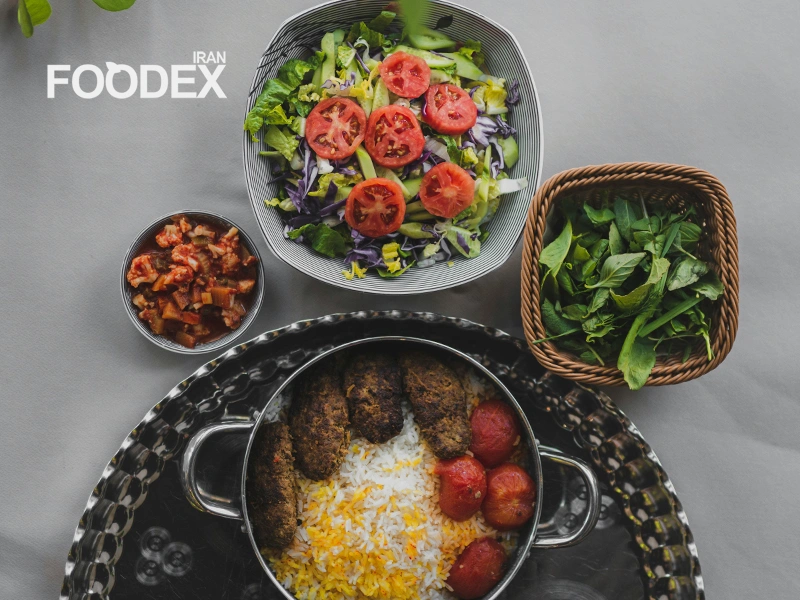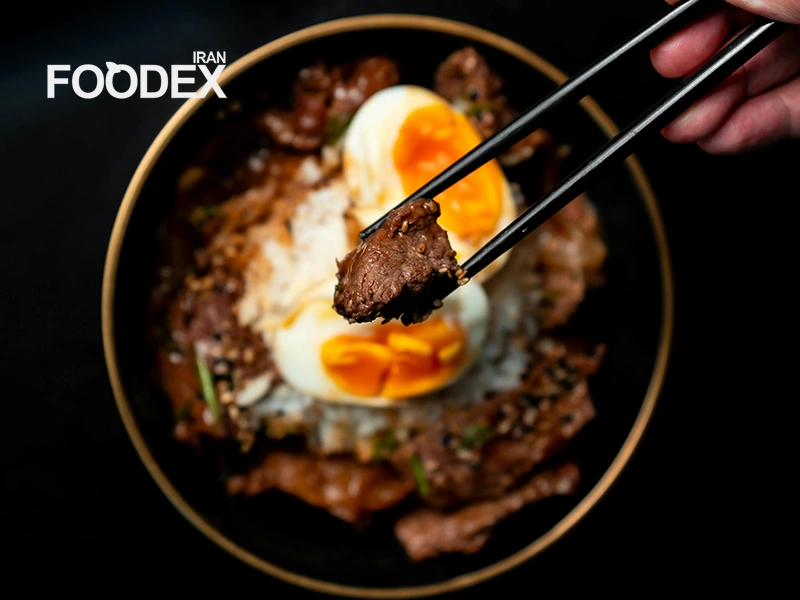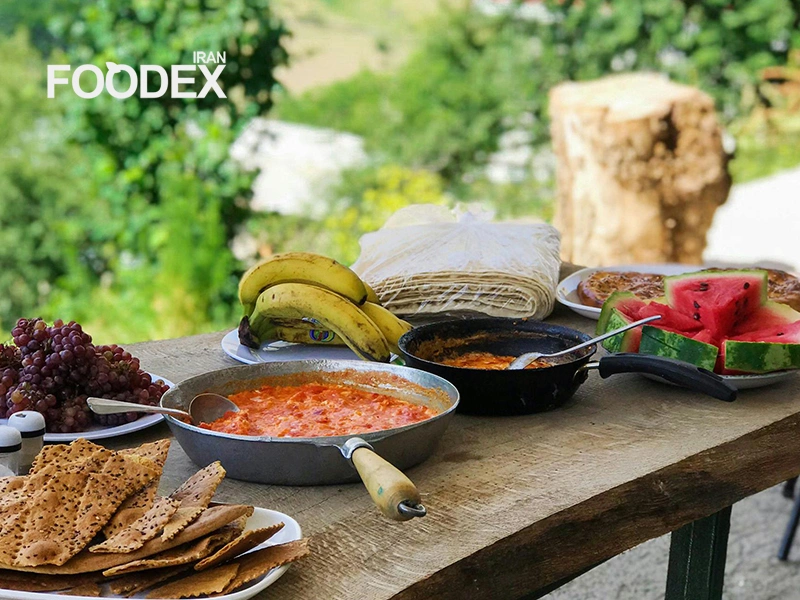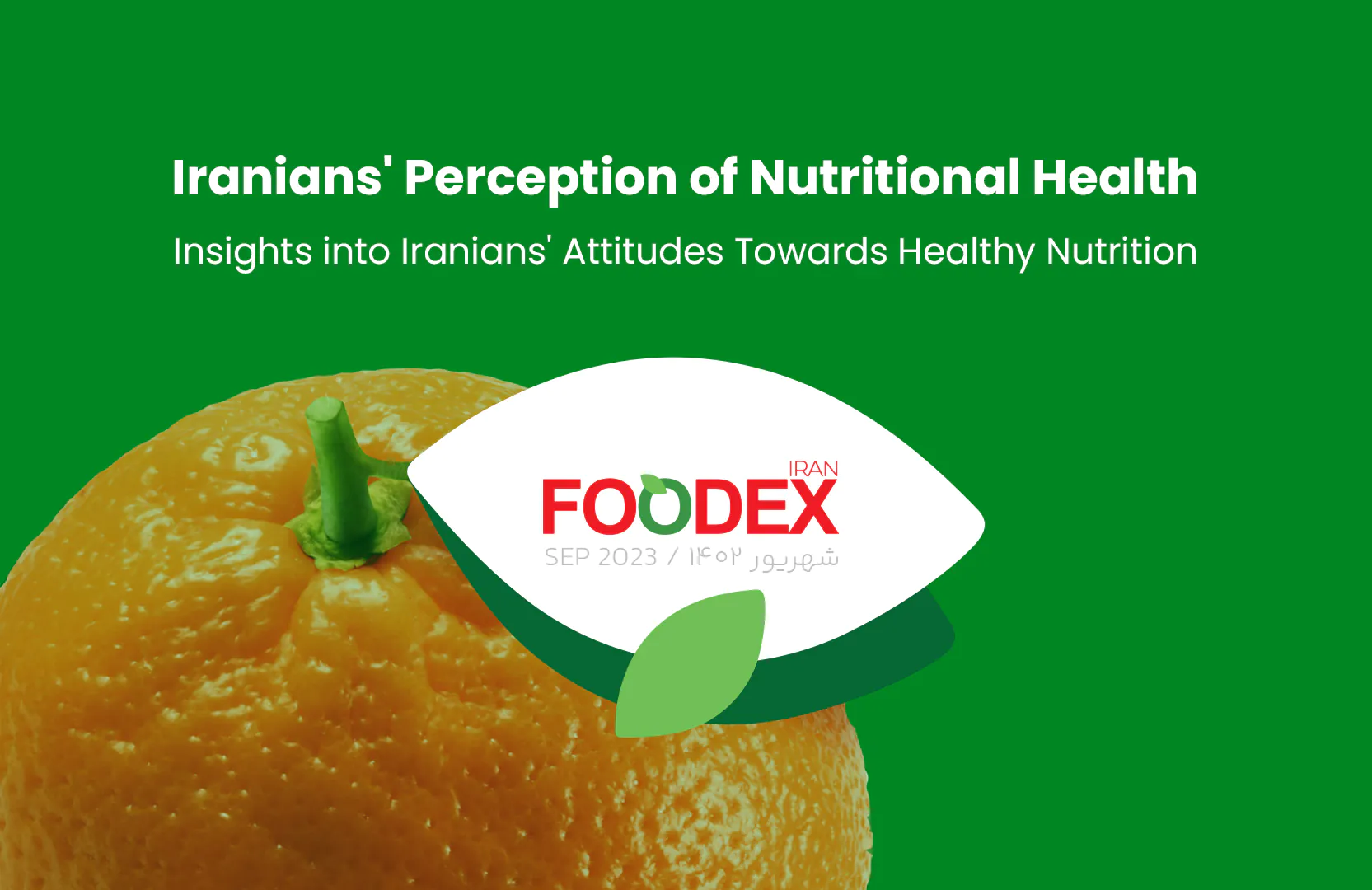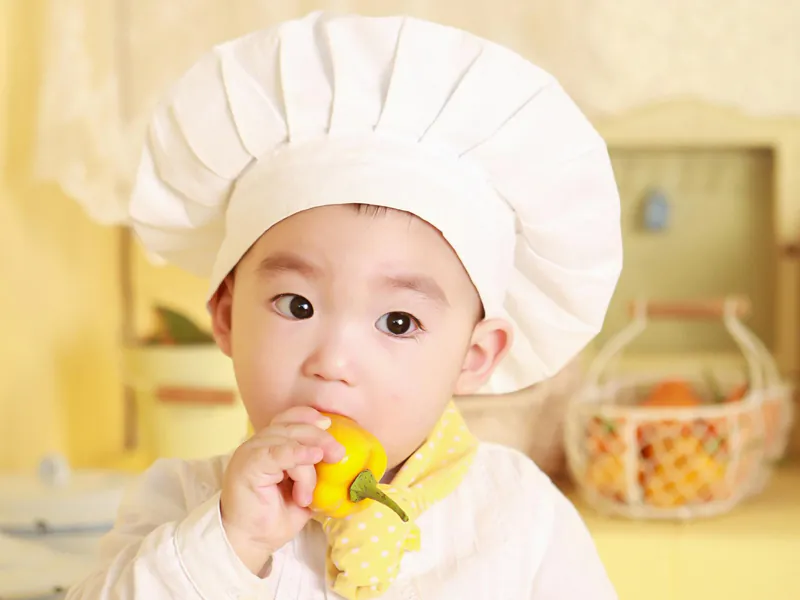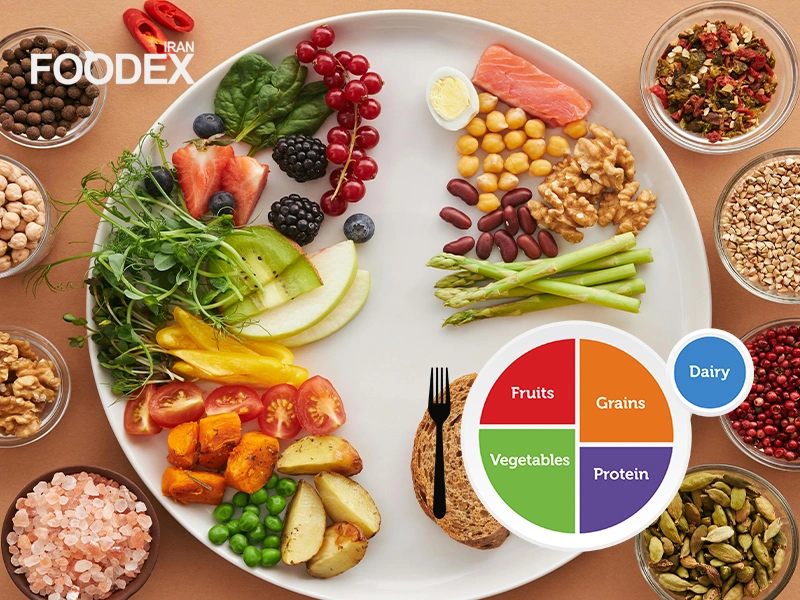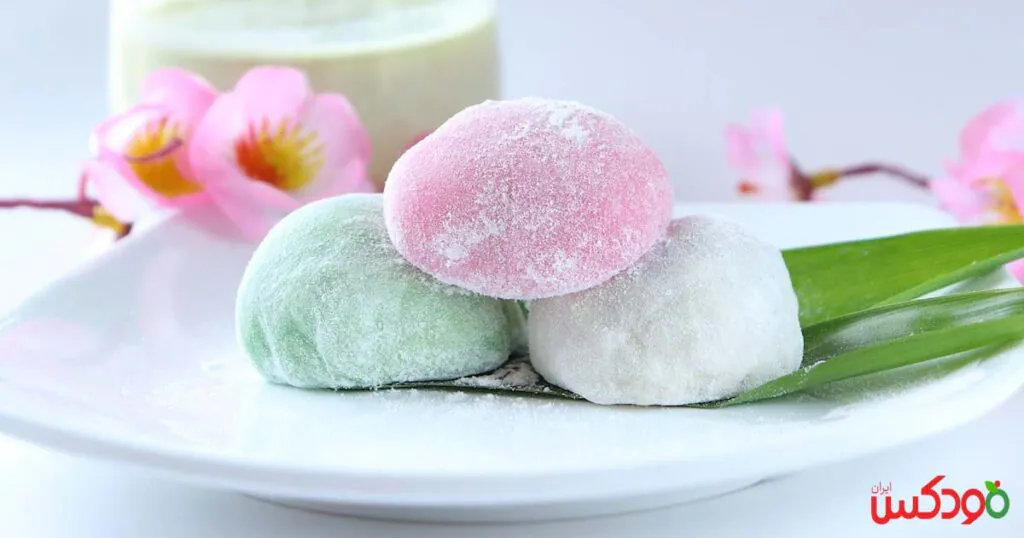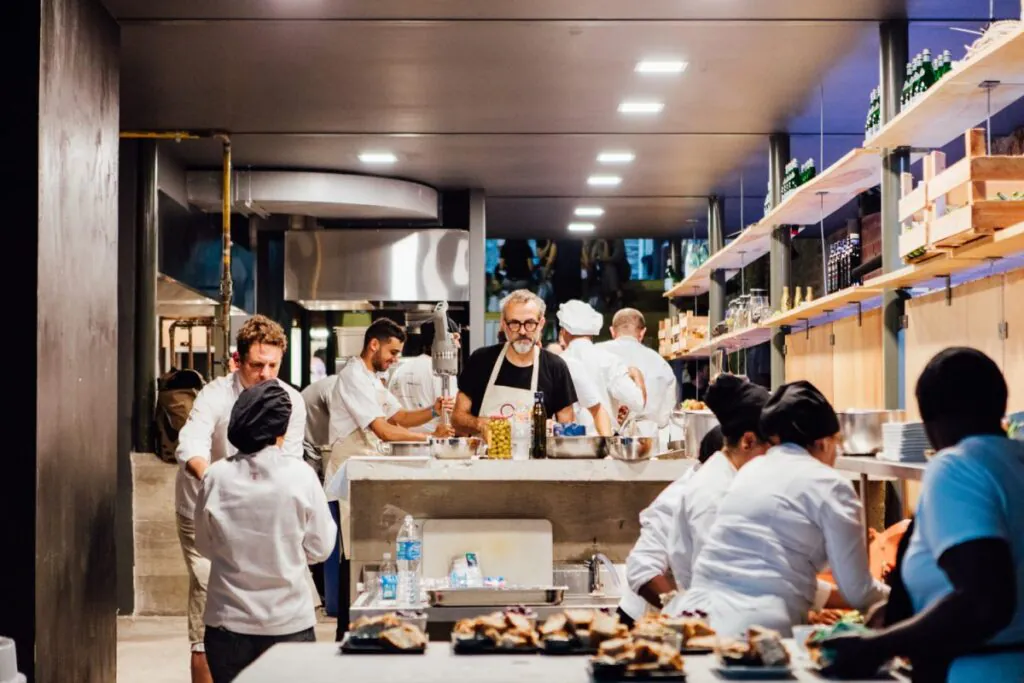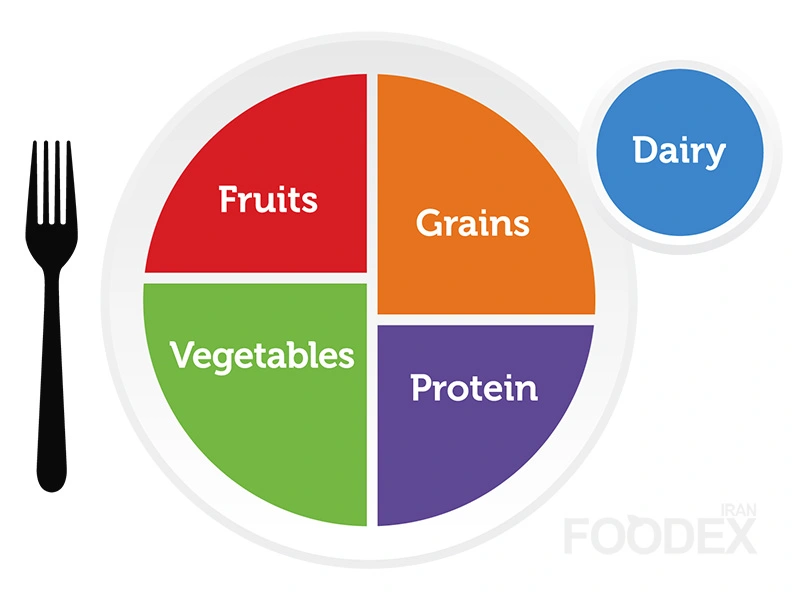Persian culture treasures food prominently throughout its traditions because culinary creations form essential parts of all major public events. Each feast brings distinct meals with a long cultural history, which provide exceptional tastes together with nostalgic memories and vibrant connections to Persian cultural practices. National and religious traditions include sabzi polo ba mahi on Nowruz and Ash-e Moharram on Tasua as essential parts of celebrations that amplify the happiness of meetings between family members and friends.
Foodex Iran Magazine presents this article that details Persian festive recipes, such as those prepared for Nowruz alongside Yalda Night, Ramadan, Tasua, and Ashura, and celebrations for various special days.
Nowruz Festive Foods
Iranians commemorate Nowruz as their grandest annual festival, introducing the Persian New Year. When this festival is celebrated, all dining surfaces acquire decorative elements. Unique dishes characterize the Nowruz celebration because they represent varied meanings, including prosperity, health, and happiness. Food is the key element during this celebration since it functions as both nourishment and the primary cause for happy occasions between loved ones.
1- Sabzi Polo Ba Mahi (Herb Rice with Fish)
During the Nowruz festivities, sabzi polo ba mahi is the most recognized dish that traditionally appears on all celebratory dining tables. The dish combines fresh herbs with fragrant rice, which accompanies either white fish or trout dishes. In Persian tradition, fish represents life, happiness, joy, and new beginnings, and herb-flavoured rice represents fresh springtime and vitality.
2- Samanu (Wheat Germ Pudding)
During Nowruz celebrations, Samanu stands beside other popular traditional dishes in the Haft-Seen table arrangement. The traditional Nowruz pudding made from sprouted wheat is on the celebratory table because it represents strength and resilience. Samanu’s tradition in Persian culture established its preparation through ancient beliefs. People eat this dish mainly during Nowruz ceremonies and Fatimiyya religious celebrations because it signifies blessings through its strong symbolism of happiness.
3- Reshteh Polo (Rice with Noodles)
People in Azerbaijan, Kermanshah, and Zanjan areas strongly favour reshteh polo as their custom Nowruz dish. The dish consists of rice combined with toasted noodles, with an optional addition of dates, raisins, and barberries, followed by gheimeh or ghormeh sabzi stews. The people of Zanjan prepare their reshteh polo with fish as an accompaniment.
4- Kuku Sabzi (Herb Frittata)
Kuku sabzi is a traditional Nowruz dish distributed during Iranian family celebrations because it includes refreshing herbaceous ingredients. The bread and yogurt with kuku sabzi represent the greenery of spring, and people eat this dish during the Nowruz season. Its vibrant colours and delightful aroma showcase Persian cuisine’s artistry on the Nowruz table.
5- Dolmeh Barg-e Mo (Stuffed Grape Leaves)
Northern Iranians consume Dolmeh barge mo as a favourite ethnic food during the Nowruz festival celebrations. The internal stuffing of grape leaves consists of rice, ground meat, herbs, and spices. Dishholders regard this food item as a fortunate sign of prosperity which appears during celebratory feasts.
6- Koofteh Tabrizi (Tabriz-Style Meatballs)
Koofteh Tabrizi hails from Tabriz, where traditional home cooks prepare these meatballs with ground meat combined with rice, herbs, and legumes. Northwestern Iranian residents use koofteh Tabrizi as a core Nowruz dish because it brings family members together. The rich flavours of these dishes bring extraordinary taste during special events.
Persian Nowruz Desserts
The celebration of Nowruz through festive meals depends heavily on desserts, as they contribute to building a festive atmosphere. Reshteh polo is a top choice among Nowruz desserts, and people enjoy this dish with several traditional sweets, including baklava and Sohan. Reshteh polo obtains its delightful taste from dates, pistachios, and rosewater; therefore, families can serve this treat at meals or as desserts.
Egyptians consider sweet Halva, produced from flour combined with rosewater and sugar, especially important during Nowruz celebrations. People frequently serve this scented dessert in religious and cultural ceremonies. Nowruz believers view Halva as a representation of both sweetness and prosperity, so the dessert typically rests on Haft-Seen tables.
Healthy Mirza Ghasemi Recipe
Read MoreYalda Night Festive Foods
Yalda Night is a crucial Persian celebration that marks the longest nighttime annual. Family members and their friends can gather at this celebration to share warm sentiments and poetic recitations while eating traditional Persian foods. The dishes prepared for Yalda Night display symbolic value because they retain their place as essential elements in this festivity. People usually prepare these traditional Yalda dishes for their celebrations:
1- Ash-e Haft Khan (Seven-Layered Soup)
During Yalda Night, Ash-e Haft Khan is one of the most beloved traditional dishes, symbolizing the festive occasion. The conventional item for Yalda Night in Iran is a soup prepared from lentils, beans, and rice with meat, which also contains many different herbs and spices based on region-specific practices. Throughout Yalda Night, families gather to symbolically overcome seven trials of life under the name Haft Khan, which initially honoured the Persian mythological hero Rostam.
2- Fesenjan (Walnut and Pomegranate Stew)
Fesenjan is a fundamental Persian stew that people especially consume during Yalda festivals. It combines ground walnuts and pomegranate molasses with chicken or red meat into a rich dish with sweet and tangy flavour notes. People enjoy fesenjan served with saffron rice because it is the typical dish for Yalda Night festivities.
3- Khoresht-e Anar va Bademjan (Pomegranate and Eggplant Stew)
The original northern Persian dinner is distinguished at Yalda Night celebrations. This dish perfectly combines savoury chicken and eggplant with fresh pomegranate seeds and a sweet-and-sour flavour profile. People in specific parts of Iran try to cook this dish during Yalda because the deep red pomegranate colours strengthen the night’s festive spirit.
4- Anar Polo (Pomegranate Rice)
Anar polo is a luxury feast that people eat extensively in Shiraz and Qazvin. The combination of fluffy rice and pomegranate seeds with saffron, chicken breast, and slivered pistachios produces a delicious and visually appealing meal. This dish’s vibrant appearance and delightful flavour render Yalda Night feasts a suitable time to prepare.
5- Koufteh Anar va Gerdoo (Pomegranate and Walnut Meatballs)
During Yalda Night, people prepare koufteh anar va gerdoo, which uses meatballs to deliver the distinct flavours coming from pomegranates and walnuts. During Yalda Night, people throughout Iran enjoy the sweet-tart taste of this particular dish. Prepared kofta meatballs commonly accompany a portion of rice or bread for consumption.
6- An authentic Yalda dinner includes roast chicken breast and pomegranate-based sauce.
Roasted chicken breast paired with pomegranate sauce is an excellent contemporary selection whenever someone seeks something different to celebrate Yalda. The dish combines chicken with pomegranate molasses, sumac, and thyme to deliver a harmonious mixture of sweet and robust tastes. This meal featuring tart and rich flavours provides an excellent choice for the festive Yalda Night celebration.
Yalda Night Desserts and Drinks
Traditional Herbal Teas and Fruit Syrups
Special herbal teas, along with the main dishes, are essential components of Yalda Night celebrations. People enjoy drinking rose petals and ginger tea for their thermal qualities, which maintain warmth over a lengthy cold night. The beverages provide sensory pleasure as well as medical advantages.
Yalda-Themed Jams
The celebration of Yalda Night includes pomegranate, apple, and quince jam, which are presented together with tea and traditional Persian herbal infusions. The rich and fruity elements in these foods bring added enjoyment to Yalda Night social meetings.
Traditional Persian Summer Dishes
The Iranian summer provides a selection of fresh, light foods which serve as excellent remedies against summer heat. Traditional summer dishes consist primarily of cooling food ingredients, which help with hydration and boosting energy levels. The following list contains several top summer dishes found in Persian cuisine:
1- Kashk Bademjan (Eggplant Dip with Whey)
Kashk Bademjan is a summer delight consisting of fried eggplant and aromatic herbs, onions, garlic, and kashk (whey) ingredients. Kashk offers refreshing tastes because of its cooling properties, making it especially suited for hot summer temperatures. People can enjoy this dish either as a main course or as a starter.
2- Shirazi Salad
This traditional Persian salad features diced cucumbers, tomatoes, onions, mint, and lemon juice. Shirazi salad provides a refreshingly tasty experience that people usually enjoy alongside diverse Persian foods.
3- Grilled Fish
This dish consists of freshwater trout and white fish, which are seasoned with Persian spices during the grilling process. The grilled fish served with fresh bread and vegetables, makes for a nourishing summer dinner while promoting light satisfaction.
4- Greek Salad (Inspired by Persian Cuisine)
The Greek Salad unites Persian elements with cucumbers, tomatoes, bell peppers, olives, and feta cheese, along with olive oil. Because of its mild taste, people enjoy this dish as their summer beverage.
5- Gheimeh Bademjan (Eggplant and Yellow Split Pea Stew)
Traditional Persian eggplant stew includes tender eggplant, lamb or beef, and split peas that receive their flavour from turmeric and cinnamon. This Persian summer dish consists of rice alongside its rich but harmonized flavours that appeal to many people.
6- Falafel
Crispy fritters made from chickpeas feature garlic and delicate herbs, and people frequently enjoy these falafel fritters as summer dishes. They are typically served together with pita bread and several dipping sauces.
7- Borani Esfenaj (Spinach Yogurt Dip)
The fabulous appetizer includes yogurt, spinach, garlic, and olive oil. It is suitable during summer months as a meal side dish or a stand-alone recess.
8- Ab Doogh Khiar (Cold Yogurt and Cucumber Soup)
Cold summer soup consists of yogurt combined with fresh cucumbers and garlic and concludes with mint. The hydrating qualities make this delicious dish an ideal choice when the temperature rises.
9- Grilled Kebab Sandwich
For a quick summer delight, eat fresh bread containing grilled meat combined with fresh vegetables and different sauces. Additionally, it makes an appearance as both a street food serving and a beloved family-made meal.
10- Homemade Persian Pickles
Persian cuisine serves homemade pickled food, including pomegranates, tomatoes, and olives, as side accompaniments. These pickled items enhance the overall taste of summer foods.
Traditional Foods for Chaharshanbe Suri (Fire Festival)
As the Persian Fire Festival Chaharshanbe Suri approaches each year, it becomes a tradition for people to leap over bonfires while sharing in festivities and delectable feasts before Nowruz. The arrival of spring brings people together during this festival to share meals which symbolize comfort while they welcome new beginnings and prosperity. A few well-known foods which people enjoy during Chaharshanbe Suri include the following:
1- Ash-e Doogh (Yogurt and Herb Soup)
The Persian soup Ashe Doogh contains chickpeas, rice, yogurt, and fresh herbs to provide a distinctive tangy taste. People in northwestern Iran consider this nourishing yet light soup their best choice for celebrating Chaharshanbe Suri festivals.
2- Ash-e Barg (Leafy Herb Soup)
The soup combines aromatic herbs with legumes and a traditional yogurt-based drink known as doogh. The regional Iranian population loves Ash-e Barg because they serve it at warm temperatures to keep their guests comfortable when the evening turns cool.
3- Persian Kebabs
Chaharshanbe Suri is also a Persian celebration that features kebabs as indispensable elements. Many individuals choose to prepare their feasts on open flames with kabab koobideh for its minced lamb and beef content and barg kebab for its grilled lamb fillet preparation. On this occasion, people can enjoy kebabs accompanied by fresh bread, grilled tomatoes, and yogurt-based sauces as a typical Persian meal.
4- Herbal Teas and Infusions
During Chaharshanbe Suri, rose petals and ginger tea are part of customary Persian herbal beverage consumption. These hot beverages bring indulgent tastes and warming relief to refresh users during colder outdoor hours.
5- Traditional Sweets and Snacks
Sholezard is saffron rice pudding, whereas ambush is crispy stuffed pastries. Dried fruits and nuts are frequently served throughout the night. The traditional celebration treats bring blessings of happiness and prosperous events alongside the new spring season.
Foods for Birthdays and Family Gatherings
Family occasions, such as birthdays, represent the biggest celebrations within Persian customs. Such celebrations unite families so people can enjoy tasty meals that demonstrate both love between family members and their connection through generosity. The selection of dishes depends on different factors, including the occasion type, personal family customs, and food choices.
Birthday Party Foods for Children
Birthday parties for children emphasize enjoyment first, and their food choices suit this lively event framework. The most favourite dishes for children’s birthday celebrations include the following options:
1- Mini Pizzas
During birthday celebrations, children prefer bite-sized mini-pizzas with different topping options. The tiny portions provide effortless handling for all types of diners, and they can choose their preferred flavor combinations.
2- Sandwich Rolls
The sandwich rolls make an excellent option for young guests because they come in small portions and provide a nice combination of cheese, deli meats, and fresh vegetables. These fun finger foods’ colourful appearance also includes creative shaping that enhances visual appeal.
3- Colorful Desserts
Parties come to life with colourful desserts, including rainbow jelly, animal-shaped or cartoon cookie pops, and chocolate cupcakes.
4- Refreshing Drinks
Children often enjoy parties by drinking fruit juices, smoothies, and chocolate milk at events. These drinks provide delicious taste and nutritional elements.
Birthday Party Foods for Adults
Adult Persian birthday events select sophisticated options between classic regional eats and universal international meals for their main menu choices. Here are some common choices:
1- Chelow Kebab (Rice with Grilled Meat)
The combination of saffron rice and grilled meat skewers forms the below kebab, which stands as a leading choice for adult birthday menus. This dish comes with fresh herbs, yogurt, and grilled vegetables.
2- Persian Stews (Khoresh)
Three classic Persian stews, khoresh fesenjan, khoresh ghormeh sabzi, and khoresh more, serve as traditional birthday food choices. These savoury Persian dishes usually come with flavorful, fragrant Persian rice.
3- Fresh Salads
The meal is balanced by Shirazi salad (cucumber and tomato salad) and seasonal green salad, which provide a fresh taste and counteract the heavy richness of the main courses.
4- Desserts
Guests at birthday parties finish their meal with baklava, zoolbia bamieh (Persian fritters), and a beautiful birthday cake decorated for the occasion. Meals ending with these desserts represent the celebration of joy and festivity.
Sogand Safari
Head of Content Department in Foodex Iran

